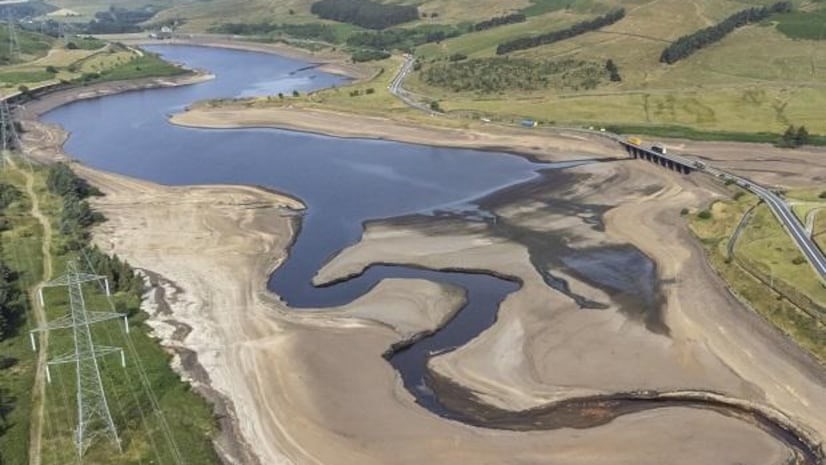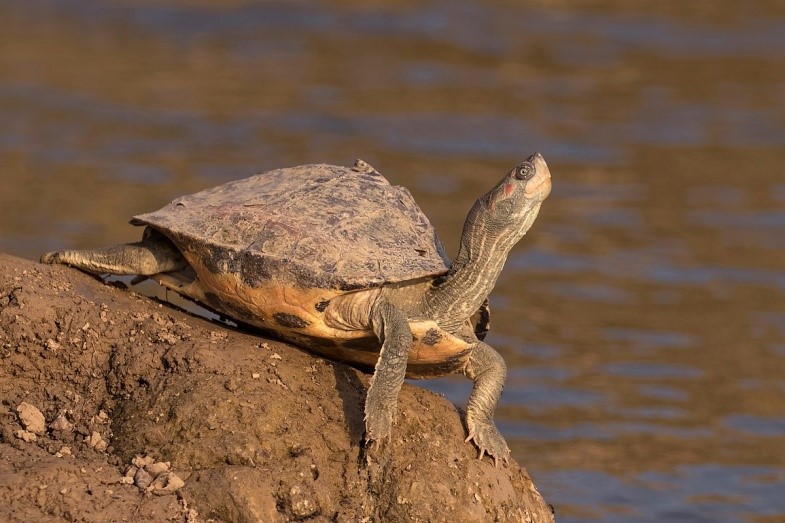Description

Disclaimer: Copyright infringement not intended.
Context
Around 650 endangered freshwater Indian tent turtles rescued from poachers were released on the order of the court of the chief judicial magistrate (CJM) in their natural habitat (Gomti river) in Bakshi-ka-talab region
Details
Gomti River
- Gomti, an alluvial river of the Ganga Plain, serves as a tributary to the Ganga river.
- Its origin can be traced back to Gomat Taala lake, also known as Fulhar Jheel, situated near Mainkot in Madhotanda, approximately 30 kilometers away from Pilibhit town in Uttar Pradesh.
- The river flows through several regions, including Sitapur, Lucknow, Barabanki, Sultanpur, and Jaunpur, before eventually merging with the Ganga at Kaithi in the Ghazipur district.
- The river stretches a total length of approximately 960 kilometers and plays a vital role in supplying around 450 million liters of water per day to the city of Lucknow.
Tributary:
- A major tributary is the Sai River, which joins the Gomti near Jaunpur. The Markandey Mahadeo temple is at the confluence of the Gomti and the Ganges.
Religious Importance:
- According to Hindu belief, the river is the daughter of Rishi Vashishtha and bathing in the Gomti on Ekadashi (the 11th day of the two lunar phases of the Hindu calendar month) can wash away sins.
- The rare Gomti Chakra is found there.
- Gomathi Chakra is the operculum of a kind of rare sea snail in the family Turbinidae.[1] One place these opercula are found is in the Gomathi River, Dwarka, hence the name. The word Chakra is from Sanskrit, meaning circular. These objects are considered sacred by Hindus, giving wealth, health, and success. Gomathi Chakra are also believed to give protection for children.

Pollution and other issues
- The Gomti River is polluted at several points of its course through the 940-kilometre (580 mi) stretch of alluvial plains in Uttar Pradesh.
- The major sources of pollution are industrial waste and effluent from sugar factories and distilleries and residential wastewater and sewage.
- The river and its tributaries, such as Kukrail Drainage,collect large amounts of human and industrial pollutants as they flow through an area of about 18 million people.
- High pollution levels threaten the Gomti's aquatic life. On 25 July 2008, the foundation stone of a 345-million-litre (91,000,000 US gal)-capacity sewage treatment plant was laid.
- The plant, promoted as Asia's largest, failed; in 2014 it was reportedly running at 10 percent of capacity, and beyond the plant (near Bharwara) untreated sewage and solid waste entered the river. The plant was intended to intercept the 23 major natural drains entering the Gomti.
Embankments
- High embankments were built around the river to protect the population of Lucknow after a major flood during 1970s, altering the Gomti's natural floodplain.
Development
- The river's floodplains and fertile land were covered with residential areas, such as Gomti Nagar and Triveni Nagar. The Gomti began receding during the late 1970s, and was under major stress in 2016.
Indian Tent Turtles

- Indian tent turtle is now listed in Schedule –I of the Wild Life (Protection) Act, 1972 and is thereby provided the highest degree of protection.
- The Indian tent turtle (Pangshura tentoria) is a species of turtle in the family Geoemydidae. The species is endemic to India and Bangladesh.
Habitats
- Its habitats include still water pools on river side and slow running water near the river banks. These are active swimmers and are mainly herbivorous.

Major Threats:
- Due to the attractive appearance of the species, they are illegally traded in the pet market.
|
PRACTICE QUESTION
Illegal trade of wild flora and fauna not only impacts the natural environment but also humans. Highlight the significant impacts of such illegal trade along with some measures to prevent this menace. 250 words
|

















